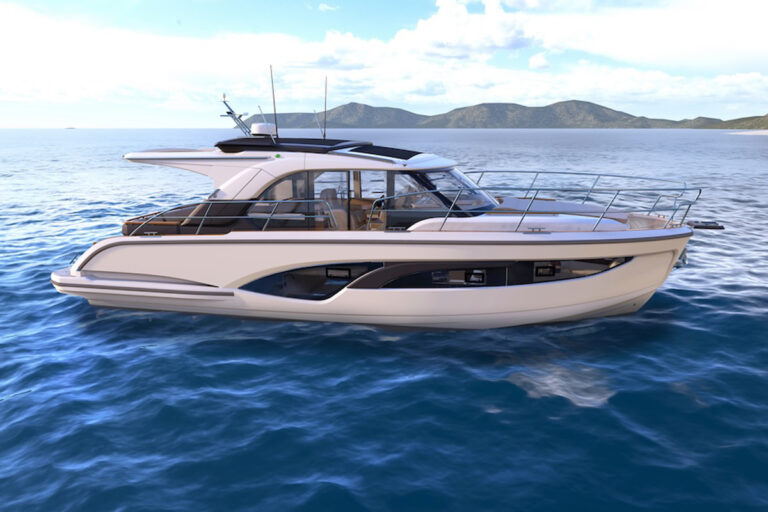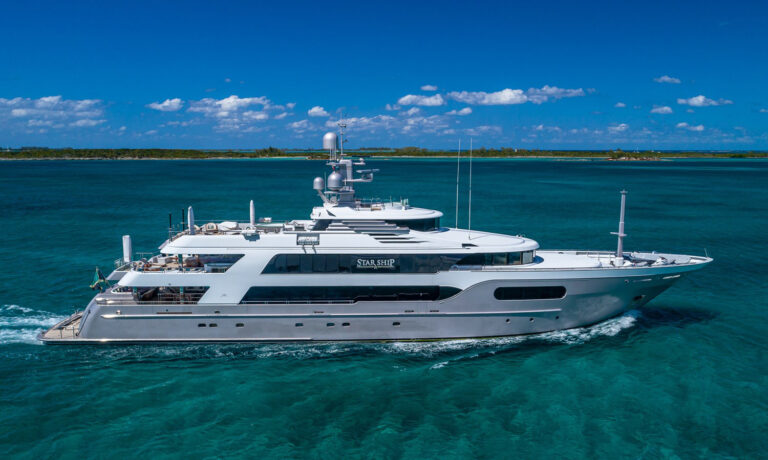The squall long past, the stars had reappeared for our passage down I-65, the invisible highway sailboats travel from Florida or the Carolinas south to the Caribbean. Shaking the reef went smoothly, but the wave hit at the very moment he unsnapped his harness from the jack line on deck. Even though we’d all seen him go over the side there was a brief moment of disbelief.
Anyone who has commanded a watch has considered the possibility. But the reality is that man-overboard (MOB) emergencies often happen when our guard is down, under conditions that we’d never expect to lead to tragedy. Last July, for instance, a group of firefighters were fishing about 35 miles off North Carolina’s Outer Banks when one fell overboard at around nine on a clear, calm morning. His disappearance went unnoticed for perhaps a couple of minutes, yet after an extensive search by the Coast Guard and local charter fleet, only his shoes were recovered.
While prevention is clearly important, the number of incidents underscores the need for a complete MOB plan that includes crew alert, locating and approaching the person in the water, and bringing the victim back aboard safely. The very best information on rescues comes from those who make them most often: the U.S. Coast Guard.
Talking to Petty Officer 3rd Class Shannon Brugh, a USCG Rescue Swimmer who was involved in the search for the lost firefighter, I ask what he considers most important after the cry of “Man overboard!”
“Get the most accurate position possible,” P.O. Brugh says. “Then we can drop a data buoy where we think the person went in which feeds drift information into our search computer.” On most GPS units the MOB key will record position, but Brugh also urges noting course and speed at the time of the incident, since a boat moving 8 knots will travel about 800 feet, or an eighth of a mile, per minute.
The traditional MOB drill begins with the shout “Man overboard.” One person is immediately assigned to point toward the victim, never looking away, while throwing over anything that floats to mark the scene. Rescue packs are available with buoys, flags, sea anchors, strobe lights, even small inflatable rafts and locator beacons.
Some authorities question the time it takes to throw markers over, emphasizing instead the need to immediately perform some variant of the “quick stop.” Under power, this means turning the wheel hard toward the side from which the person fell to swing the propellers away from the victim, while simultaneously placing the engines in neutral. Once the victim is clear of the props, continue the turn back to the victim. There are several quick-stop techniques for sailboats, depending upon the boat and crew, but whichever is employed, watch loose rigging from hastily dropped sails that could foul a propeller or injure someone on deck. Remember, too, that a quick stop is also vital if a crewman goes over in a safety harness-there have been instances where a person still attached to a moving boat had to cut free to prevent drowning, only to be lost at sea.
If a quick stop is not practical or when the victim is no longer in sight, try a Williamson turn. Without changing speed, put the wheel hard over to either side until the boat has turned 60 degrees from its original heading, then immediately shift the wheel hard the other way until on the reciprocal of the original heading. This should retrace the boat’s wake. It isn’t a tricky maneuver, but practice helps.
The advisability of practice is driven home by Bob Beck, currently the chief instructor for Zodiac’s Maritime Academy, where Beck teaches police, firefighters and military personnel to operate inflatable rescue boats. His chilling statistic: “66 percent of victims in the water that are not retrieved on the first attempt aren’t there for a second try.” While each situation is different, Beck generally recommends approaching head to wind and retrieving the victim on the lee side, somewhere around midship.
Case studies have shown that reboarding the victim is often the weak link in rescues. Many boaters simply assume they will use the stern ladder, but in fact the transom is dangerous in a sea; it is all too easy to be swept under the swim platform or stern. After several tragic deaths where shorthanded crews had victims alongside but couldn’t retrieve them, members of Seattle’s Sailing Foundation developed the Lifesling, which combines a horseshoe buoy and lifting sling. Through mock rescues the group has honed its technique, which works with nearly any ring buoy and lifting strap. Either stop the boat near the victim and throw a ring buoy and line, or tow the buoy, steering in a circle around the victim to draw the buoy within reach. Once the victim has donned the sling, a block and tackle on board allows a smaller rescuer to lift even a much larger victim.
The Lifesling is a godsend, especially to the smaller wives of bigger sailors, but not infallible; it is important that the tackle is attached high enough to hoist the victim to the deck. It also will not work with injured or severely hypothermic victims who cannot put on the sling. One solution in such cases is to launch the life raft and tie it alongside as a rescue platform, with safety harnesses on the rescuers.
MOB emergencies are preventable. As a first line of defense, railings, lines, equipment and nonslip surfaces must be maintained, but there are always those unexpected events: the urge to tighten a loose radio antenna or retrieve a cushion blown overboard. Risky under any circumstances, these can be fatal offshore unless you’re wearing a harness attached to a jack line-and at the very least, a PFD (for working the deck, an inflatable version is much preferable, because less bulky). Clear rules help; for instance, no one should be allowed on deck alone offshore. If this is unavoidable, they should at least notify the skipper immediately before and after.
Falling over the side is not just a small-boat problem, or something that the rich, unlike the rest of us, are spared. In fact, the quest for privacy may have led to the 1991 disappearance of media mogul Robert Maxwell from his 180-foot yacht, Lady Ghislaine, off Tenerife, Canary Islands. Seeking a quiet moment at four in the morning, perhaps to smoke a cigar and contemplate his empire, Maxwell vanished. Fanciful rumors that he’d been done away with by Israeli intelligence aside, it became clear when his body was finally recovered that he’d simply fallen in.
Several electronic devices are now available to alert the crew if someone falls in. MOBi-lert pendants constantly transmit a low power signal, with about a 100-foot range. If a pendant’s signal is lost, the receiver sounds an alarm, records a MOB waypoint, and can even stop the engines, turn the boat head-to-wind and launch rescue gear. While the MOBi-lert can’t home in on a pendant, the ALERT system includes a proprietary water-activated beacon, vessel alarm and radio direction finder. Direction-finding equipment offered by ACR and McMurdo receives any EPIRB or pocket-sized Personal Locator Beacon’s 121.5 MHz homing signal; both come with training beacons.
If you’re in the water, with or without a beacon or a PFD, there are still things you can do to better your chances. Again, Petty Officer Brugh has some thoughts on the subject, though his overboard experience is entirely voluntary. If you find yourself alone offshore, he says, “Conserve your energy.” Don’t swim after the boat or futilely chase a ring buoy drifting away in a strong wind. Keep your arms and knees near your chest and head out of the water to reduce heat loss, with your back to breaking waves. If caught without a PFD, tie knots in the ends of your jacket sleeves and fill them with air. “If you have to, ditch your shoes,” Brugh says, “but keep your clothes for warmth.” While most people instinctively wave their arms to attract attention, “Splashing is much more visible against a blue ocean.” Finally, be aware that you can last much longer than you might think; just a few months ago a Polish seaman was rescued after treading water for 21 hours without a PFD. He probably won’t be taking any Swimmercise lessons at his local YMCA anytime soon, but let his survival be an inspiration to us all.









